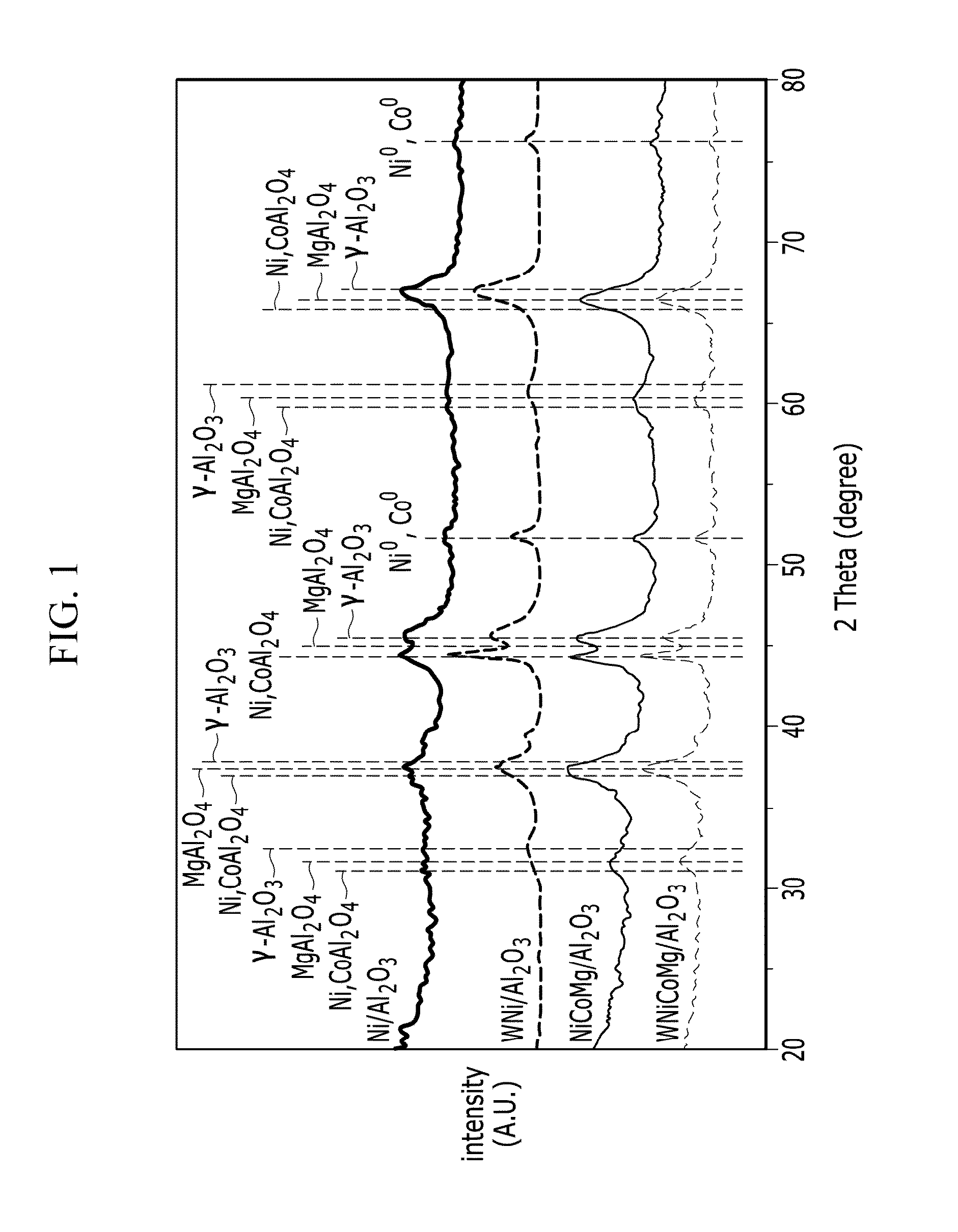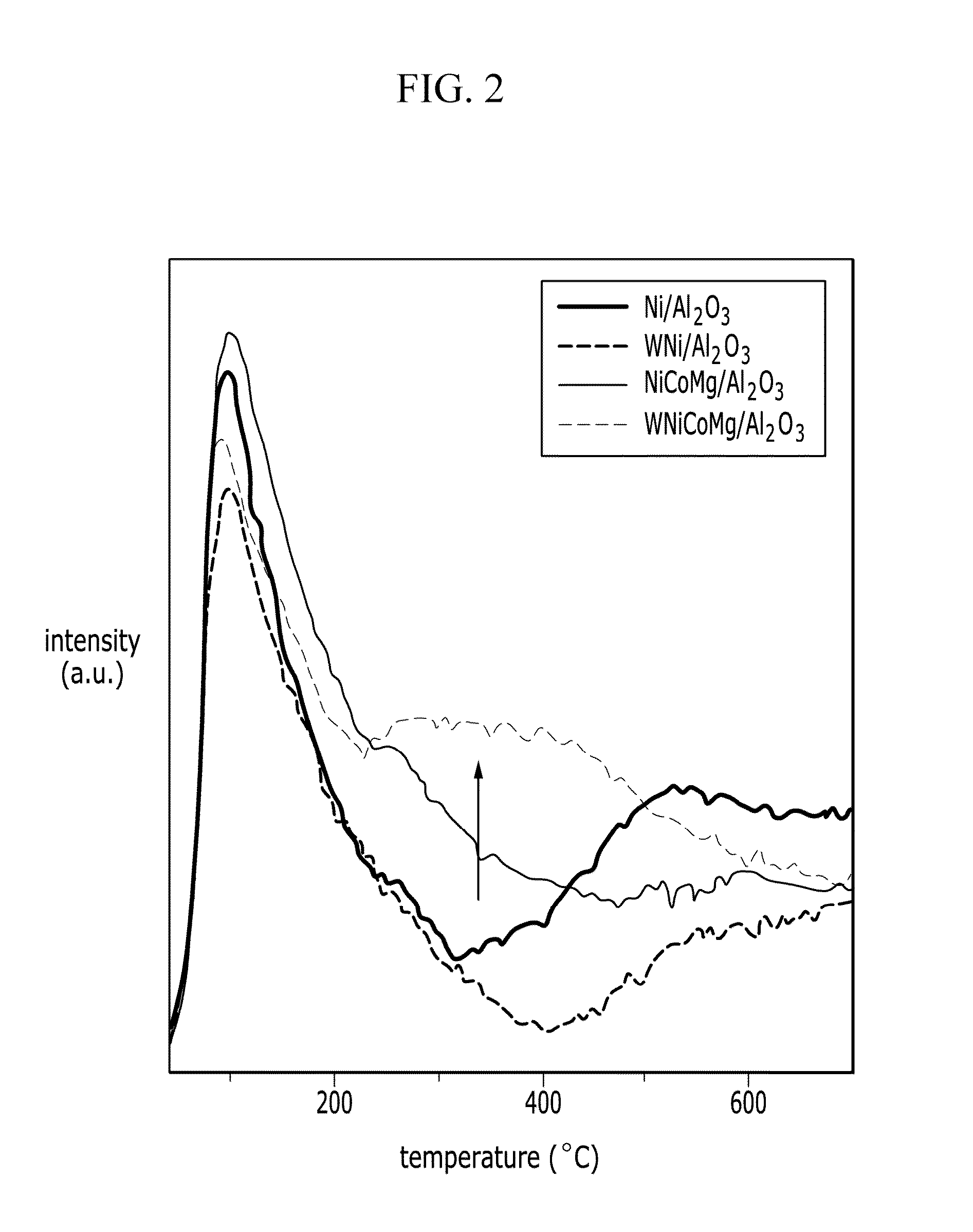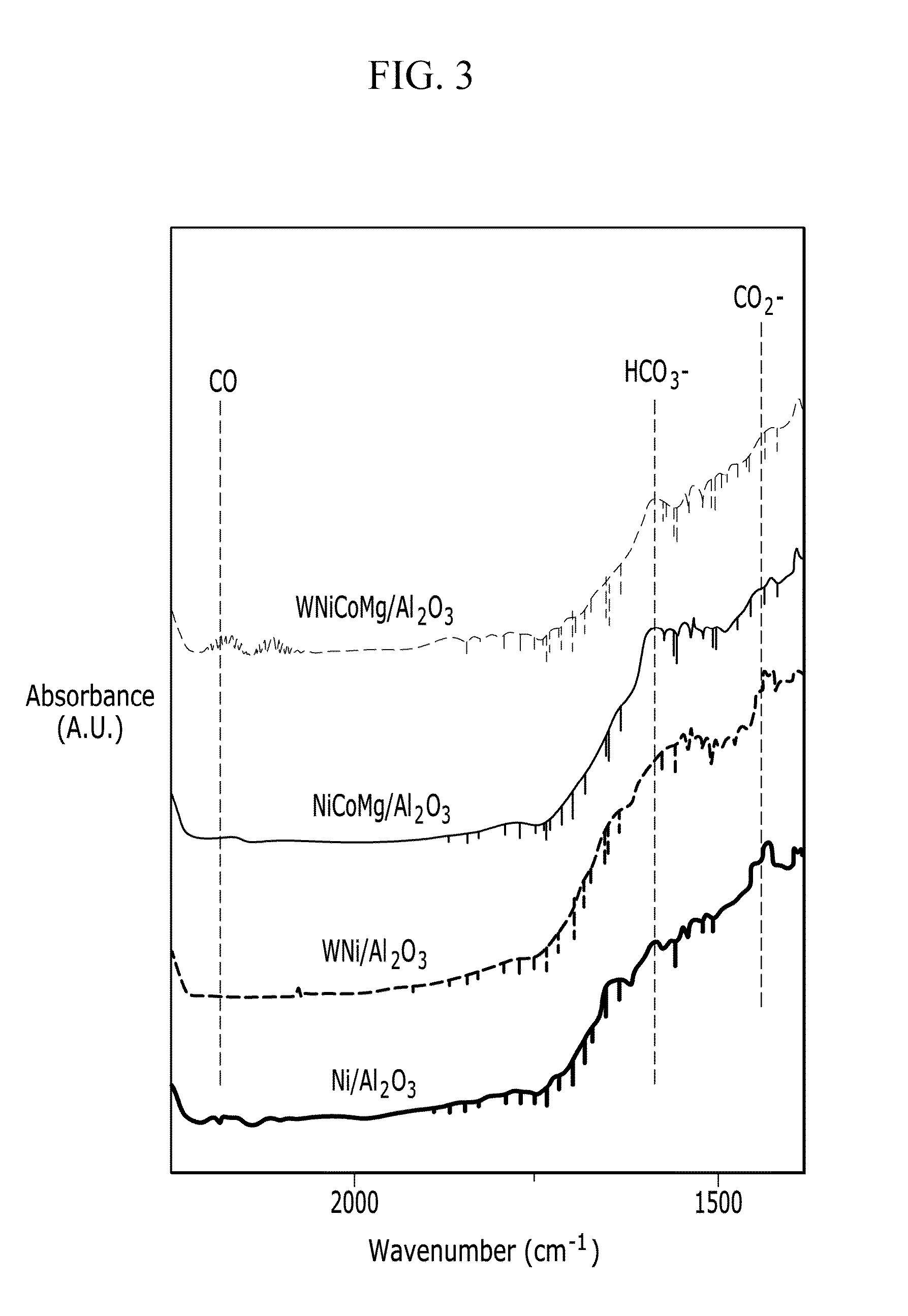Catalysts for carbon dioxide reforming of hydrocarbons
a hydrocarbon and catalyst technology, applied in the direction of physical/chemical process catalysts, metal/metal-oxide/metal-hydroxide catalysts, etc., can solve the problems of catalyst coking, catalyst degradation via catalyst coking, clogging of catalyst pores, etc., and achieve the effect of increasing reaction efficiency
- Summary
- Abstract
- Description
- Claims
- Application Information
AI Technical Summary
Benefits of technology
Problems solved by technology
Method used
Image
Examples
example
Preparation of a Catalyst
Example 1
Preparation of a Catalyst Including NiCoMg Solid Solution Particles Supported onto Al2O3
[0076]Ni(NO3)2-6H2O, Mg(NO3)2-6H2O, and Co(NO3)2-6H2O are put into 5 ml of deionized water while stirring and completely dissolved therein to produce an aqueous solution of the metal salts. Using the aqueous solution of the metal salts and via the incipient wetness impregnation method, 10 g of gamma alumina (from Aldrich, specific surface area: 150 m2 / g, granule diameter: about 3 mmφ, pore volume: 3 to 5 (cm3 / g)m) is co-impregnated with Ni(NO3)2-6H2O, Mg(NO3)2-6H2O, and Co(NO3)2-6H2O. The obtained product is dried in an oven at 120° C. for 24 hours, and calcined in air (300 ml / minute) at 500° C. for 5 hours. The calcined product (i.e., the catalyst) is subjected to a reducing process in a pure H2 atmosphere by increasing a temperature at a rate of 10° C. / min and maintaining the temperature at 850° C. for 2 hours to prepare a catalyst including NiCoMg solid solut...
example 2
Preparation of a Catalyst Including NiCoMg Solid Solution Particles with Al2O3 Islands Formed Thereon (the Water-Pretreated Catalyst)
[0077]The temperature of the reactor having the catalyst obtained in accordance with Example 1 is decreased to 30° C., and 5 ml of water is added thereto. Then, the reactor is heated at a rate of 10° C. / min to evaporate water in a hydrogen atmosphere, and the catalyst contained therein is heat-treated at 850° C. for one hour to prepare a catalyst wherein the NiCoMg solid solution particle is supported on the alumina support and the solid solution particle includes alumina islands on its surface (hereinafter referred to as WNiCoMg / Al2O3). The amount of Ni, the amount of Co, and the amount of Mg are 3 wt %, 3 wt %, and 3 wt %, respectively, based on the total weight of the catalyst.
experimental example 1
Measurement of BET Surface Area of the Catalyst Prior to and after the Reforming Reaction
[0081]BET surface areas of the catalysts prepared in Examples 1 and 2 are measured using a nitrogen adsorption technology at −196° C. with BELsorp (BEL, Japan) before and after the catalysts are subjected to the reforming reaction. The results are summarized in Table 1. The average particle sizes of the catalyst metal are measured using XRD, TEM, and H2 chemisorption, and the results are compiled in Table 1. Prior to the adsorption measurement, the samples are degassed at a temperature of 200° C. for 24 hours. The CO2 reforming reaction is carried out under the following conditions.
T=850° C., CH4:CO2:N2=1.0:1.0:1.0, 200 hr, GHSV=10 k h−1
TABLE 1BET surface areaAverage particle sizeCatalyst(m2 / g)(nm)Fresh NiCoMg / Al2O3167.3011Used NiCoMg / Al2O101.7715Fresh WNiCoMg / Al2O3111.7614Used WNiCoMg / Al2O398.6216
[0082]The results of Table 1 confirm that the catalyst of Example 1 exhibits a relatively small cha...
PUM
| Property | Measurement | Unit |
|---|---|---|
| size | aaaaa | aaaaa |
| specific surface area | aaaaa | aaaaa |
| temperature | aaaaa | aaaaa |
Abstract
Description
Claims
Application Information
 Login to View More
Login to View More - R&D
- Intellectual Property
- Life Sciences
- Materials
- Tech Scout
- Unparalleled Data Quality
- Higher Quality Content
- 60% Fewer Hallucinations
Browse by: Latest US Patents, China's latest patents, Technical Efficacy Thesaurus, Application Domain, Technology Topic, Popular Technical Reports.
© 2025 PatSnap. All rights reserved.Legal|Privacy policy|Modern Slavery Act Transparency Statement|Sitemap|About US| Contact US: help@patsnap.com



